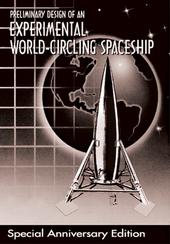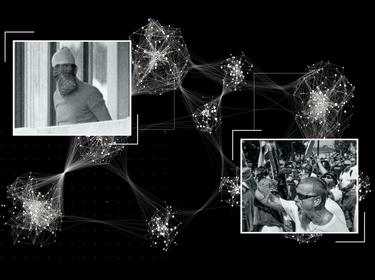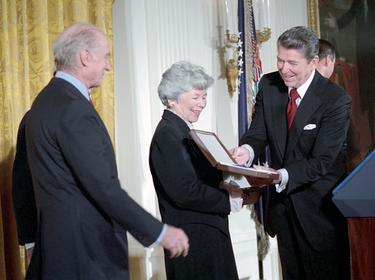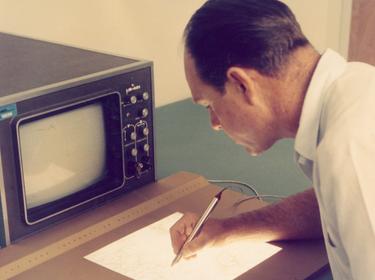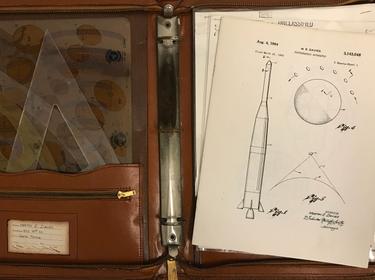A Brief History of RAND

RAND researcher Nancy Nimitz, September 1, 1958
Photo by Leonard McCombe/The LIFE Picture Collection/Getty Images
On May 14, 1948, Project RAND—an organization formed immediately after World War II to connect military planning with research and development decisions—separated from the Douglas Aircraft Company of Santa Monica, California, and became an independent, nonprofit organization. Adopting its name from a contraction of the term research and development, the newly formed entity was dedicated to furthering and promoting scientific, educational, and charitable purposes for the public welfare and security of the United States.
Almost at once, RAND developed a unique style. It blended scrupulous nonpartisanship with rigorous, fact-based analysis to tackle society's most pressing problems. Over time, RAND assembled a unique corps of researchers, notable not only for their individual skills but also for their commitment to interdisciplinary cooperation. By the 1960s, RAND was bringing its trademark mode of empirical, nonpartisan, independent analysis to the study of many urgent domestic social and economic problems. In later years, RAND extended its focus beyond the United States with the goal of making individuals, communities, and nations safer and more secure, healthier and more prosperous.
The Origins of RAND
World War II revealed the importance of technology research and development for success on the battlefield. It also drew attention to the wide range of scientists and academics outside the military who made such development possible.
As the war drew to a close, it became clear that complete and permanent peace might not be assured. Forward-looking individuals in the War Department, the Office of Scientific Research and Development, and industry thus began to discuss the need for a private organization to connect military planning with research and development decisions.
Commanding General of the Army Air Force H. H. “Hap” Arnold articulated this need in a report to the Secretary of War:
“During this war, the Army, Army Air Forces, and the Navy have made unprecedented use of scientific and industrial resources. The conclusion is inescapable that we have not yet established the balance necessary to insure the continuance of teamwork among the military, other government agencies, industry, and the universities. Scientific planning must be years in advance of the actual research and development work.”
Other key players involved in the formation of this new organization were Major General Curtis LeMay; General Lauris Norstad, Assistant Chief of Air Staff, Plans; Edward Bowles of the Massachusetts Institute of Technology, consultant to the Secretary of War; Donald Douglas, president of the Douglas Aircraft Company; Arthur Raymond, chief engineer at Douglas; and Franklin Collbohm, Raymond's assistant.
The name of the organization? Project RAND.
The Douglas Years
On October 1, 1945, Arnold, Bowles, Douglas, Raymond, and Collbohm met to set up Project RAND under special contract to the Douglas Aircraft Company. Project RAND got under way in December 1945, expending a total of $640 in its first month of operation. That same month, the new office of Deputy Chief of Air Staff for Research and Development, to which Project RAND would report, was officially established, with Major General LeMay serving as its first appointee. On March 2, 1946, Collbohm began directing Project RAND in a separate area within the Douglas plant at the municipal airport in Santa Monica, California.
In May 1946, Project RAND released its first report, Preliminary Design of an Experimental World-Circling Spaceship. It discussed the potential design, performance, and use of manmade satellites. A year later, Project RAND moved from the Douglas plant to new offices in downtown Santa Monica. Project RAND also held a symposium in New York as a first step in enlisting social scientists.
By early 1948, Project RAND had grown to 200 staff. Its researchers had expertise in a wide range of fields, including mathematics, engineering, aerodynamics, physics, chemistry, economics, and psychology.
An Independent Nonprofit Organization

Hand-tinted photo of the original RAND building at 1700 Main Street in Santa Monica, California, circa 1960s
RAND Archives
By late 1947, it seemed that Project RAND should consider separating from Douglas. (It was already operating fairly autonomously.) In February 1948, the chief of staff of the newly created U.S. Air Force wrote a letter to the president of Douglas that approved the evolution of Project RAND into an independent, nonprofit corporation. H. Rowan Gaither, Jr., a prominent San Francisco attorney who later served as president and then as chairman of the board of the Ford Foundation, was retained as legal counsel to determine the best means of setting up an independent RAND.
On May 14, 1948, RAND was incorporated as a nonprofit corporation under the laws of the State of California. The articles of incorporation set forth RAND's purpose in language that was both remarkably brief and breathtakingly broad:
To further and promote scientific, educational, and charitable purposes, all for the public welfare and security of the United States of America.
Informal discussions with representatives of the Ford Foundation led to an agreement in July 1948 for an interest-free loan from the foundation and its guarantee of a private bank loan to RAND. A total of $1 million was secured for operating the new corporation.
Four years later, an expansion of the foundation's loan enabled the establishment of a RAND-sponsored research program, which furnished staff with the means to conduct small, nonmilitary research projects. This marked the beginning of the diversification of RAND's agenda and was the first of many grants by the Ford Foundation to support important new RAND research initiatives.
On November 1, 1948, the Project RAND contract was formally transferred from the Douglas Aircraft Company to the RAND Corporation.
RAND's Early Contributions
Many highlights of RAND's early contributions were summarized in a 1996 book (PDF) commemorating the 50th anniversary of Project RAND.
Historian David Jardini of Carnegie Mellon University compiled an exhaustive list of contributions by RAND in his 1996 doctoral dissertation. He examined RAND's early years and the broadening of the organization's research agenda.
Jardini's dissertation showed a reach that went far beyond assistance to military decisionmakers. Highlights include significant achievements in space systems, providing the foundation for America's space program, and important contributions to digital computing and artificial intelligence. (For example, Paul Baran's work on packet switching provided the building blocks for today's internet technology. RAND staff also designed and built one of the world's earliest computers.) RAND researchers also developed theories and tools for decisionmaking under uncertainty. And they made foundational contributions to game theory, linear and dynamic programming, mathematical modeling and simulation, network theory, and cost analysis.
Jardini highlighted a methodological approach called systems analysis. Systems analysis provides military decisionmakers with information designed to “sharpen their judgment and provide the basis for more informed choices.” As RAND's scope broadened, Jardini noted that “systems analysis served as the methodological basis for social policy planning and analysis across such disparate areas as urban decay, poverty, health care, education, and the efficient operation of municipal services, such as police protection and fire fighting.”
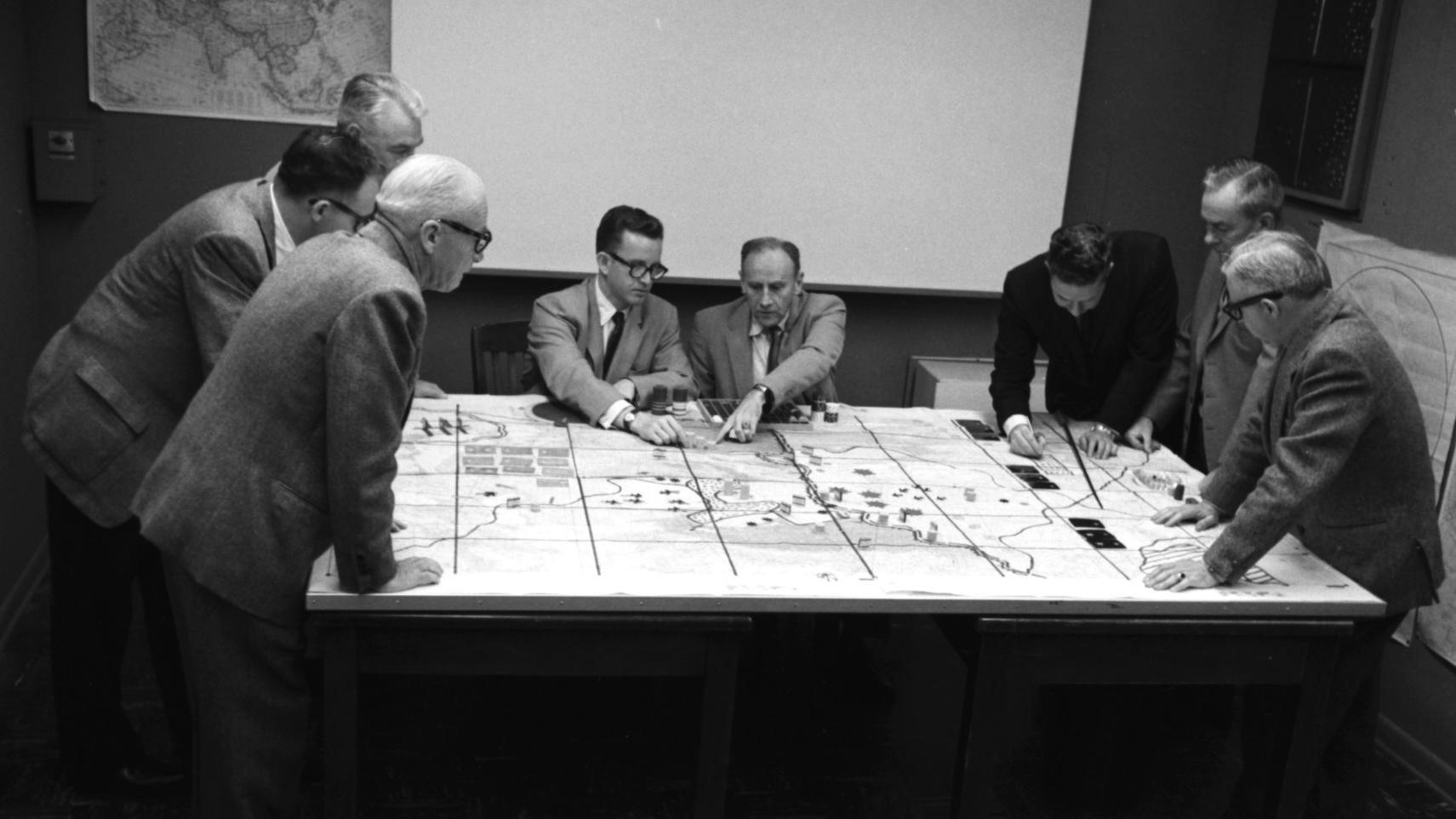
Engineering Operations game with Milton Weiner (3rd from right), Olaf Helmer (2nd from right), and others, 1966
RAND Archives
RAND's early research also formed the core of pathbreaking economic analyses of major social policy issues, such as improving the U.S. health care system and providing affordable housing to low-income families.
RAND developed the planning, programming, and budgeting system that Secretary of Defense Robert McNamara's “Whiz Kids” promoted throughout the U.S. government in the early 1960s. The system became the federal standard under President Lyndon Johnson in 1965.
With roots in the Cold War competition with the Soviet Union, RAND's early defense-related agenda evolved to encompass such diverse areas as space; economic, social, and political affairs overseas; and the role of government in social and economic problem-solving.
Across a broad range of subjects, RAND research is characterized by its objectivity and nonpartisanship; its empirical foundation; its quality, scientific rigor, and interdisciplinary approach; and its dedication to improving policymaking on the most important issues of the day.
